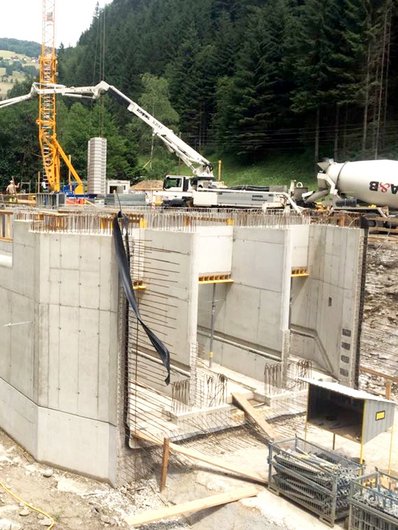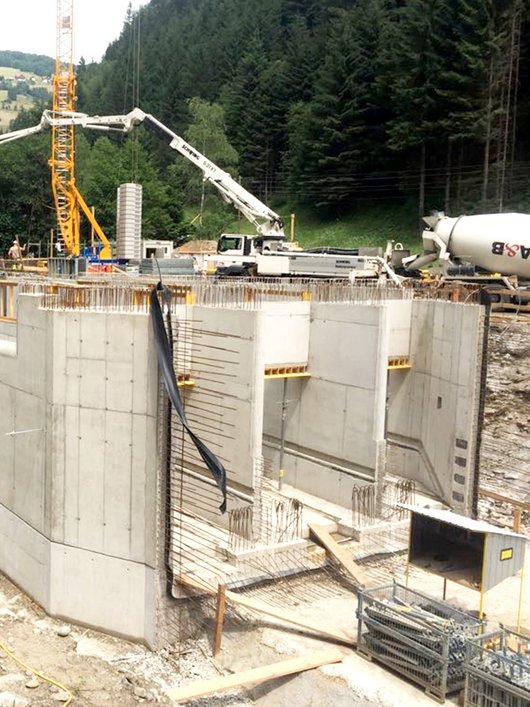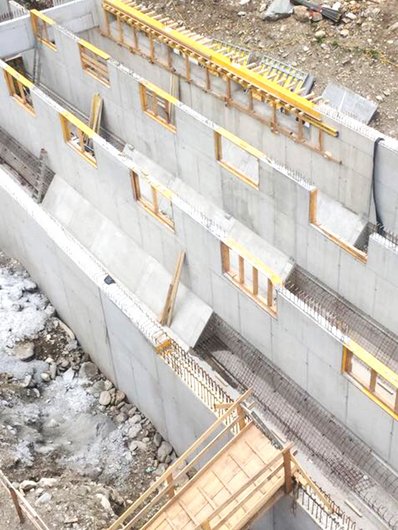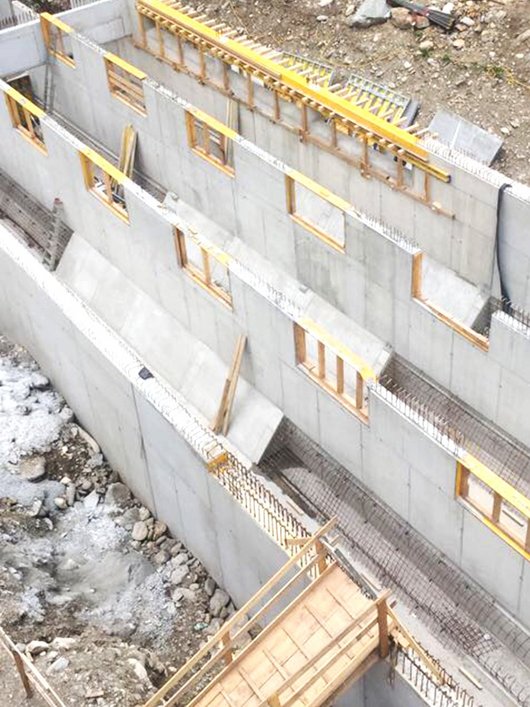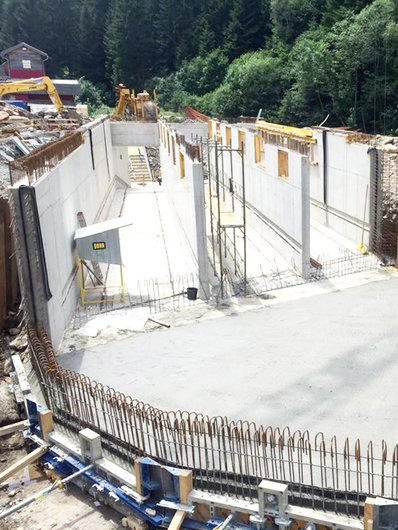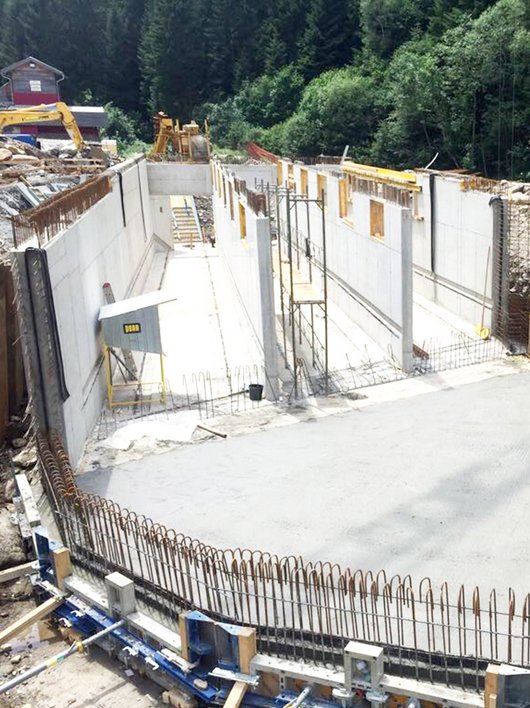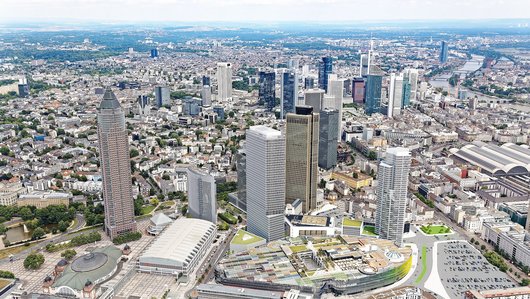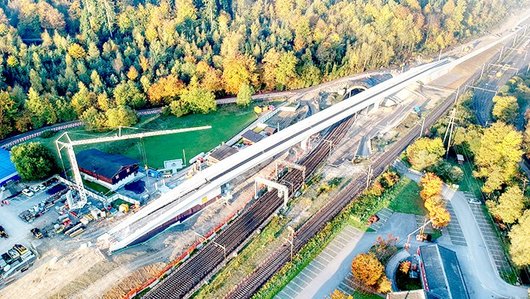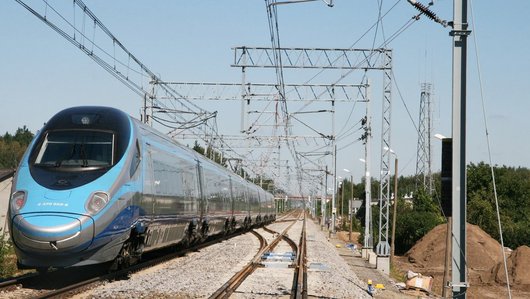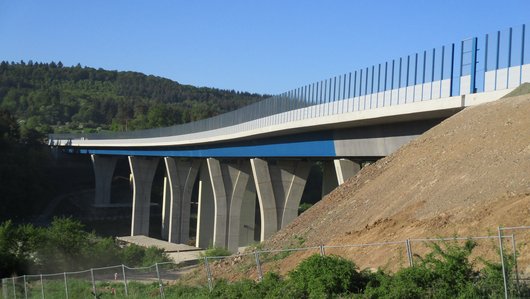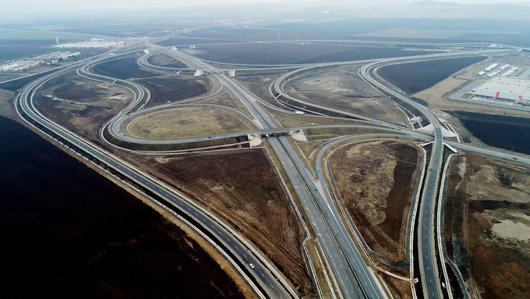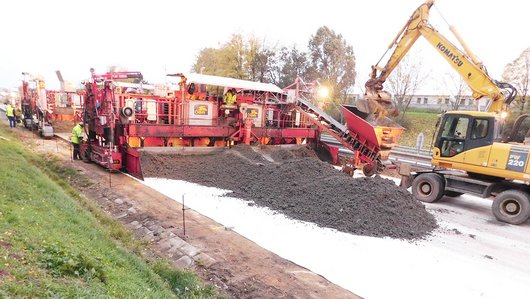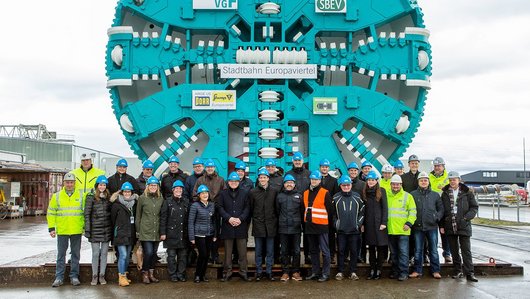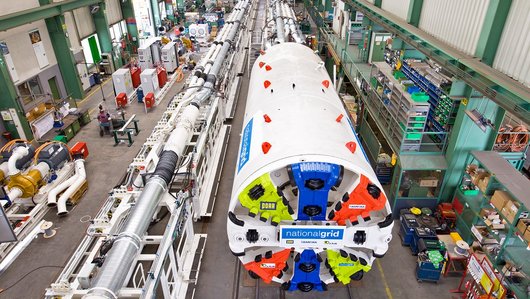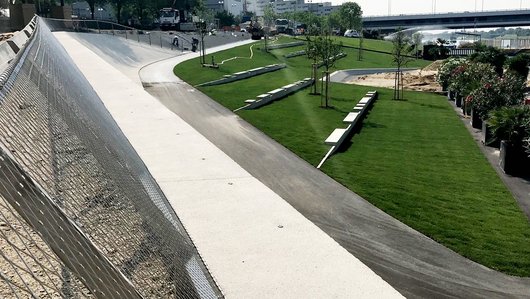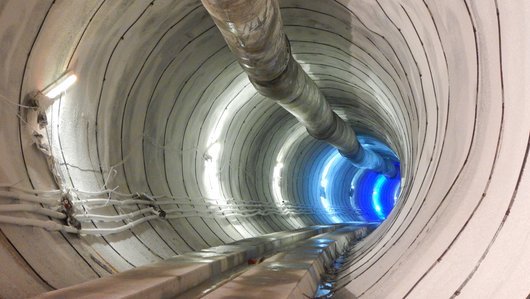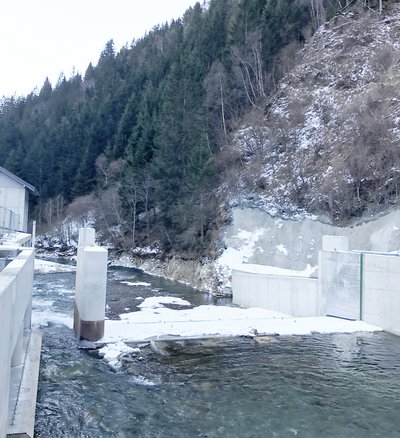
3.500 households
Hydroelectric power plant
in Kremsbrücke
PORR Bau GmbH has constructed a small power plant between the towns of Kremsbrücke and Gmünd in the Liesertal valley of Carinthia, Austria.
The top-stage construction sections 1 and 3 comprised the construction of a water-retaining structure with a sand trap, a screening chamber and a fish lift, as well as a powerhouse in the river Lieser. The river's course had to be redirected in order to enable the construction works to proceed smoothly.
-
EmployerKraftwerksgesellschaft Kremsbrücke GmbH
-
ContractorPORR Bau GmbH
-
Project typeCivil engineering, Power plant construction
-
Project scopeConstruction of the power plant and construction of the new powerhouse and transfer structure
-
Order volumeEUR 2.1 million
-
Construction start05/2017
-
Construction end12/2017
Background
The power plant company Kremsbrücke GmbH commissioned the Carinthian/East Tirolean branch of PORR with the demolition and construction works for the power plant in the Lieser river. In order to carry out the construction works, a water-retaining structure was built at a height of 939,7m above sea level, from which the Lieser was directed to the powerhouse, located directly above the existing small-scale power plant, via an approximately 1,950m penstock. The power station itself is equipped with two Francis turbines with a throughput capacity of 5.3m³ per second and a 2,780kW output. Since the spring of 2018, 12.5 million kWh of electricity can be generated per year.
This corresponds to an average consumption of 3,500 households. The electricity generated in the powerhouse is fed directly into the Kärnten-Netz GmbH supply grid. It is connected to the grid via underground cables at the Kremsbrücke switchgear. When selecting the site and route, every attempt was made to minimise the visual impact of the structure on the surrounding landscape. This was achieved by adapting the buildings to their surroundings and laying the penstock underground.
Building in and with our natural surroundings challenges everyone involved in the project, but we have mastered it all.
The project
The construction scheme was divided into two major parts: the powerhouse and the retaining structure. Before construction works on the powerhouse could begin, the existing small-scale power plant had to be demolished. The existing weir structure was completely dismantled for this purpose. At the same time, work began on the dewatering measures for the construction pit on the left-hand side (downstream). The construction pit facing the B99 trunk road to Katschberg on the other side was secured with a jetcrete wall nailed into place.
Dewatering the site before beginning the excavation works represented a major challenge: the underwater trench at the powerhouse was especially tricky. The excavation depth for the underwater trench is around 3m below the streambed at normal water levels. For this reason, the Lieser was temporarily diverted around the powerhouse and the construction pit was secured with filled trench boxes and sheet piling walls. The extreme constraints on space in the Lieser ravine meant that the river could not be diverted very far. It was not possible to move the river more than a few metres away from the work area. A water-law ruling restricted the "in-water" construction period to six months and mandated that the works be monitored by an ecological supervisory body. Several pump shafts provided the necessary protection for the individual slab foundations to be laid.
The entire powerhouse was constructed in reinforced concrete. The works took place in the shelter of the solid temporary construction pit system and were successfully completed within a very short period of time. The painting work, window installations, steel works and roof-laying works commissioned by PORR were subsequently carried out.
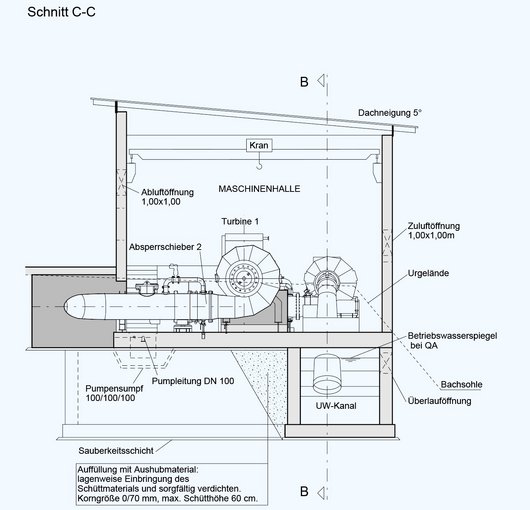

Construction works for the water-retaining structures, sand trap and fish lift
While work on the powerhouse was underway, work began on building the water-retaining structure. All these structures, like those of the powerhouse, are located in the existing river bed. The construction workflow was optimised to minimise the number of measures required to seal off and divert the water stream. PORR had to divert the course of the Lieser to the right-hand side of the ravine in an earlier stage of the construction works for this purpose. Tried and tested methods were used here once again: a heavy trench box filled with stones combined with the material of the existing embankment reinforcements.
These diversion measures provided sufficient protection for the completion of the intake structure, the sand trap, part of the weir panel foundations and the water level measuring and screening chambers. The weir structure itself consists of a weir panel with a flush gate and a removal structure equipped with a coarse rake cleaner at the intake. The sand trap, which consists of three chambers with four spillways, is located immediately downstream from the removal structure.
The Lieser was subsequently redirected through the completed sand trap and water level measuring chamber. The water outlet via the penstock was closed off for the duration of the construction and a temporary outlet into the existing river bed was created. This was done to create a dry construction pit for the construction of the weir panel foundations and the fish lift. A fish-stream weir panel with a span of 14m was used for lateral drainage. Jetcrete reinforcements were nailed into place for the construction of the 40-metre-long fish lift. The fish lift itself was built as a vertical slot. A total of 1,860m³ of concrete and 165t of reinforcements were used for the water-retaining structure over a six-month period. To ensure that floodwater can pass through without causing damage during operations, the Lieser riverbed was lowered by 2.5m. This depression begins at around 80m upstream and ends at roughly 130m downstream.
Technical data
-
Concrete incorporated1.850m³
-
Reinforced concrete165t
Technical data
-
Concrete incorporated1.100m³
-
Reinforced concrete100t
Summary
Besides the short construction period, the main challenges consisted of carrying out the dewatering measures and optimising the construction workflow. The deepest construction pit sections were 4m below the existing rough gravel base course. The construction site team also had to contend with lengthy periods of rain and repeated flooding following summer storms. Boulders the size of a small car also had to be moved under severe spatial constraints. Building in and with our natural surroundings was a real challenge for everyone involved in the project. However, the excellent teamwork meant that every challenge was turned into a success.

